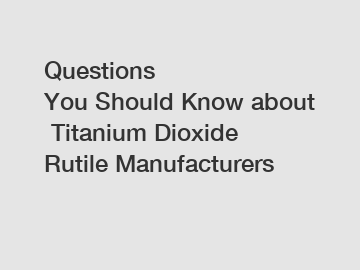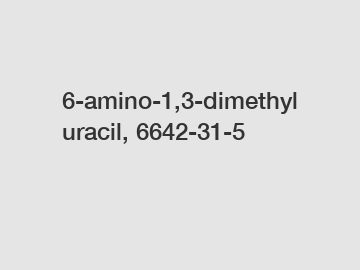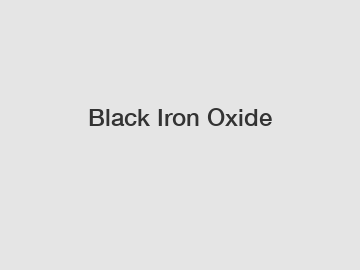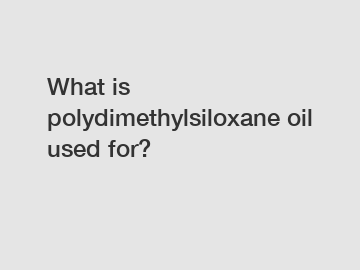Anionic Surfactant - an overview
What is an Anionic Surfactant?
Anionic Surfactant is the product with the longest history of development, the largest output and the largest variety of surfactants. Anionic surfactants are divided into sulfonate and sulfate salts according to the structure of their hydrophilic groups, which are the main categories of anionic surfactants at present. The various functions of surfactants are mainly manifested in changing the properties of the liquid surface, liquid-liquid interface, and liquid-solid interface. The surface (boundary) surface of a liquid is the most important. Structurally, the anionic surfactants are classified into four categories: carboxylate, sulfonate, sulfate, and phosphate.
Anionic Surfactant Examples
Typical anionic surfactants are soap, alkylbenzene sulfonate, alkyl sulfonate, alkyl sulfonate, alkyl sulfate, fluorinated fatty acid salt, polysiloxane, fatty alcohol sulfate, Fatty alcohol polyoxyethylene ether sulfate, α-alkenyl sulfonate, fatty alcohol polyoxyethylene ether phosphate, alkyl alcohol amide, alkyl sulfoacetamide, alkyl succinate sulfonate, alcohol amine Alkylbenzene sulfonates, naphthenates, alkylphenol sulfonates, polyoxyethylene monolaurates, and the like.
Anionic surfactants are usually poorly soluble at low temperatures. If the solution concentration continues to increase, it will reach a certain limit and then hydrate the active agent. If the temperature of water is increased, the solubility will increase rapidly due to the dissolution of micelles at a certain temperature. The temperature at this time is called the sudden change point. This characteristic is unique to ionic surfactants.
Anionic surfactants have a limited number of hydrophilic groups, but a large number of hydrophobic groups. Important hydrophilic-based raw materials are carboxylic acids, sulfonates, sulfonic acids, phosphates, etc .; hydrophobic-based raw materials are animal and vegetable oils and their hydrolysates, such as fatty acids, higher alcohols, and synthetic alcohols and alkanes with petrochemicals as raw materials. Basic benzene, α-olefin, etc. Among the animal and vegetable oils are coconut oil, castor oil, cottonseed oil, palm oil, sperm whale oil, tallow and fish oil, and also natural processed products such as abietic acid and naphthenic acid are not used. less.
Anionic surfactants have very good effects in penetrating, wetting, emulsifying, dispersing, solubilizing, foaming, decontamination, antistatic, and smoothing. Click for more.
Application of Anionic Surfactant
Anionic surfactant is one of the largest yields of surfactants. It cannot be mixed with cationic surfactants and will lose its effectiveness because it will precipitate in aqueous solution.
It can be used with amphoteric and non-ionic surfactants. Commonly used as detergent, wetting agent, Pesticide Emulsifier and dispersant.
Additional resources:How Does Modified Silanes Work?
How Does Organic Farming Work?
Key Questions to Ask When Ordering Sodium Cumenesulfonate Price
Nitrogen, hybrid, and electric cryosaunas
What is the application of Cas 6843-66-9?
10 Questions You Should Know about Di-(3-Ethoxy Silane Propyl)-Tetrasulfide and Carbon Black Mixture
How to Choose Modified Silicone Oils
It is used in various detergents in daily chemicals;
In cosmetics, it is used as a foaming agent, dispersant and emulsifier for shampoos, baths, various creams, toothpastes, etc .;
As an emulsifier in foods, Defoamers, dispersants, preservatives, solubilizers, thickeners, protein stabilizers, etc .;
Feed emulsifiers, dispersants, stabilizers; used as emulsifiers, thickeners, preservatives, antioxidants, etc.
In the textile industry, it can be used as oil agent, dyeing aid, bleaching agent, soft processing agent;
Pesticide emulsifier, spraying agent, dispersant;
Asphalt emulsifier in highway and urban road construction, such as tall oil Sulfonates;
Cement water reducer in civil engineering;
Emulsifier, oil displacement agent, lubricant, sand fixing agent, water blocking agent, demulsifier, corrosion inhibitor, drag reducing agent, water loss reducing agent in oilfield development Agent;
Used as emulsifier and antistatic agent in emulsification polymerization in polymer industry;
Metal cleaning agent; mine flotation agent; wastewater treatment agent; Brightener, dispersant, pitting inhibitor, can be added to copper plating solution and In nickel plating bath;
Other industries such as coatings, inks, transportation, ship recycling, etc. have applications.
If you want to know more about what is Anionic Surfactant, please contact us as soon as possible!
5 Reasons Why Your Business Needs Zirconium Phosphate for Sale?
What is HPMC for Gypsum Plaster?
Exploring the Differences Between Silicone and PDMS
How to Choose Bifunctional Organosilanes?" - A Comprehensive Guide
What's the Best Type of Cryotherapy Chamber? (C-6)
MAGNESIUM - Uses, Side Effects, and More
Comparing Single-Phase vs Immersed Dielectric Coolants: Which is Better?










Comments
0